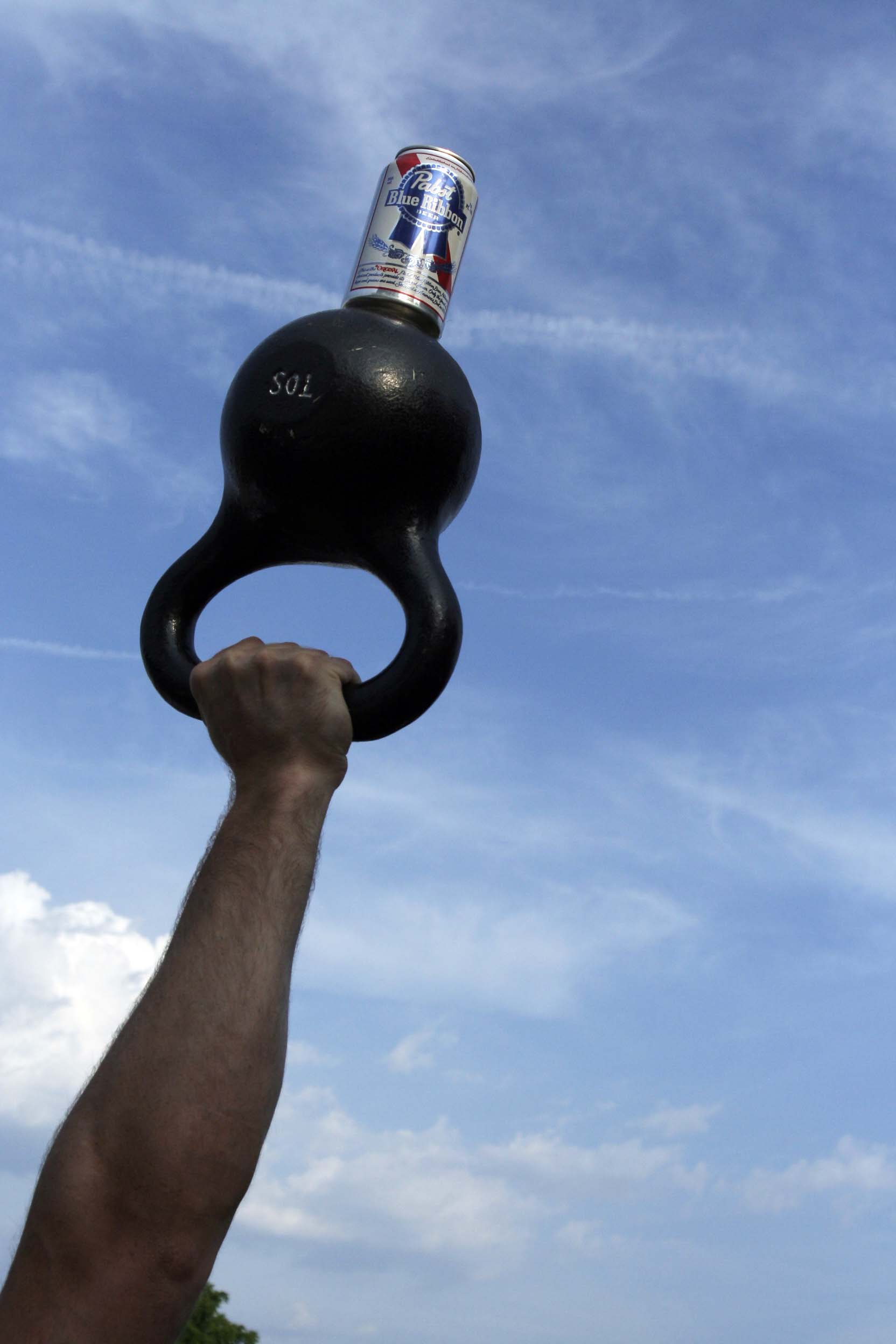Put down your adult leisure beverage. I’m talking kettlebells here.
The kettlebell has a knack for exposing weak areas. Holding the bell in the bottoms-up position utilizes the awkward design for unique benefit. (Bottoms-up meaning that the bell is gripped so that the flat bottom is facing up.)
Balance, alignment, grip, and core activation make any b-u exercise a full-body exercise. As a self limiting exercise, sloppy form with ambitious weight is met with prompt failure.
Though cleans and presses get the most bottoms-up treatment, nearly any exercise can be supercharged with this tricky tweak.
Get-ups, floor presses, carries, holds, squats, and stacked presses all benefit from the neuromuscular (mind/muscle) connection. Bottoms-up work embodies the ideal of strength as skill. It must be learned and ingrained as well as muscled.
Mark Reifkind notes that bottoms-up pressing requires all the same muscular cues as a good bench press. Perpendicular forearms, strong grip, weight on the heel of the palm, power from the lats, and a compact shoulder girdle combine for the optimal pressing groove.
My first bottoms-up experience came at the instruction of a fellow trainer during a workout when I had to walk a long length of soccer field with a measly 12kg. The right side was challenging but doable. I could barely hold up my left arm after 2 steps. Asymmetries will jump out and slap you in the face once the balance factor enters the equation.
Here are some suggestions on incorporating bottoms-up exercises:
3×3 light single arm bottoms-up cleans and presses before a shoulder workout.
1 very light, slow bottoms-up TGU before heavy get-up practice.
Max rep bottoms-up double floor presses on bench/chest day.
Cap off your ab routine with a heavy bottoms-up rack hold for time.
Pistol squats while holding 1 or 2 bells bottoms-up.

Check out these monster bottoms-up lifts by Brett Jones –
Further Reading:

